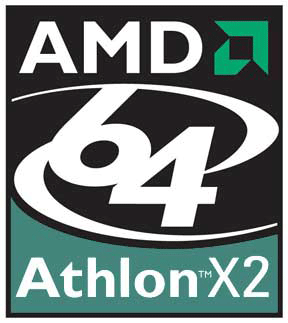AMD's Athlon 64 X2 4800+ & 4200+ Dual Core Performance Preview
by Anand Lal Shimpi on May 9, 2005 12:02 AM EST- Posted in
- CPUs
Both AMD and Intel appear to be playing release date games with their latest dual core processors.
Intel's affordable dual core desktop solution, the new Pentium D, officially launched in the middle of last month, but has yet to be seen in the channel.
AMD appears to be joining in on Intel's game and is lifting their NDA on Athlon 64 X2 performance today, instead of waiting until June as they had originally planned. Note that the timing of today's article doesn't mean that there's any change in the Athlon 64 X2 release or shipping schedule. The CPUs still won't be available until Q3 or Q4 of this year, but AMD appears to want to get performance numbers out there as soon as possible; given the impressive performance that we had previewed in our first article, it's not much of a surprise from AMD.

We've already discussed the pricing and lineup of AMD's Athlon 64 X2 line, but as a quick refresher, here are the tables from our original review:


We've talked quite a bit about the impact of dual core on the desktop, but to keep things to the point, if you're interested in knowing a bit more, please take a look back at the following topics:
- The Intangible Dual CoreThe benchmarks used in this article (including the multitasking tests) are identical to those used in our first AMD dual core article.
- Scheduling and Responsiveness
- Characterizing Dual Core Performance
- Dual Core System Impressions










109 Comments
View All Comments
Quanticles - Monday, May 9, 2005 - link
#63you going to hire anand as a consultant? lol
Viditor - Monday, May 9, 2005 - link
Anand...thanks muchly for the reply!I guess I just wanted to know if you had compared memory timings (I should have known that you had!).
I'm just trying to get a handle on what will perform well and under what circumstances (I don't know if you noticed above, but I just had a colleague put a hold on a $90,000AUD order because of many of todays reviews...your input really DOES matter!).
While rendering speeds are the paramount issue for me, multitasking is also important.
Jeff7181 - Monday, May 9, 2005 - link
Overclock it! :DViditor - Monday, May 9, 2005 - link
Nat, thanks for the reply."for some reason the high end P4's have *felt* like faster desktop processors to me"
I hear what you're saying...to me, they don't seem faster but they do seem "smoother". It feels sort of like the AMD's drive in a lower gear but with higher RPMs, you may be going the same or faster speed but the ride's a lot "torquier" (is that a word?) so you both accelerate AND decelerate faster.
GentleStream - Monday, May 9, 2005 - link
OK, I'll be patient.bob661 - Monday, May 9, 2005 - link
#51Synthetic benchmarks do not generally correlate to real world applications. There's no bias, you're just a dumbass.
Anand Lal Shimpi - Monday, May 9, 2005 - link
GentleStreamI'm still working on additional multitasking tests (including a skype/gaming test as well as the multitasking compile test) but they didn't make it into this review.
Take care,
Anand
GentleStream - Monday, May 9, 2005 - link
So where is the multitasked compile test? You did the compile test in the last review for building Firefox but did not do a parallel compile i.e.such as make -j 4. That is the test which I was really looking for.
fitten - Monday, May 9, 2005 - link
#46 Actually, no. I use (and write) multithreaded and multiprocess code every day for a living as well as for fun. I can't wait for the X2s to come out so I can buy one (I've been planning on it for over a year now!). I've already got everything picked out, I just need the dang things to be available!Btw, I'm also a gamer of sorts so I have to pay attention to both the programmer and the gamer inside me :P
Anand Lal Shimpi - Monday, May 9, 2005 - link
"but that possibility is always there."I've always been very clear that this is *not* how things work at AnandTech. I specifically delegated all advertising duties to a separate company to ensure that there wasn't even a chance for manufacturers to have any influence on any AnandTech editors. From a business standpoint, you can run a much more successful business if your loyalties lay with your readers and their desires rather than with manufacturers. Credibility is everything and we'd have to be pretty stupid to sacrifice that for any amount of money or manufacturer favoritism. A lot of things in life just boil down to common sense, and how we work at AnandTech is one of them.
Take care,
Anand